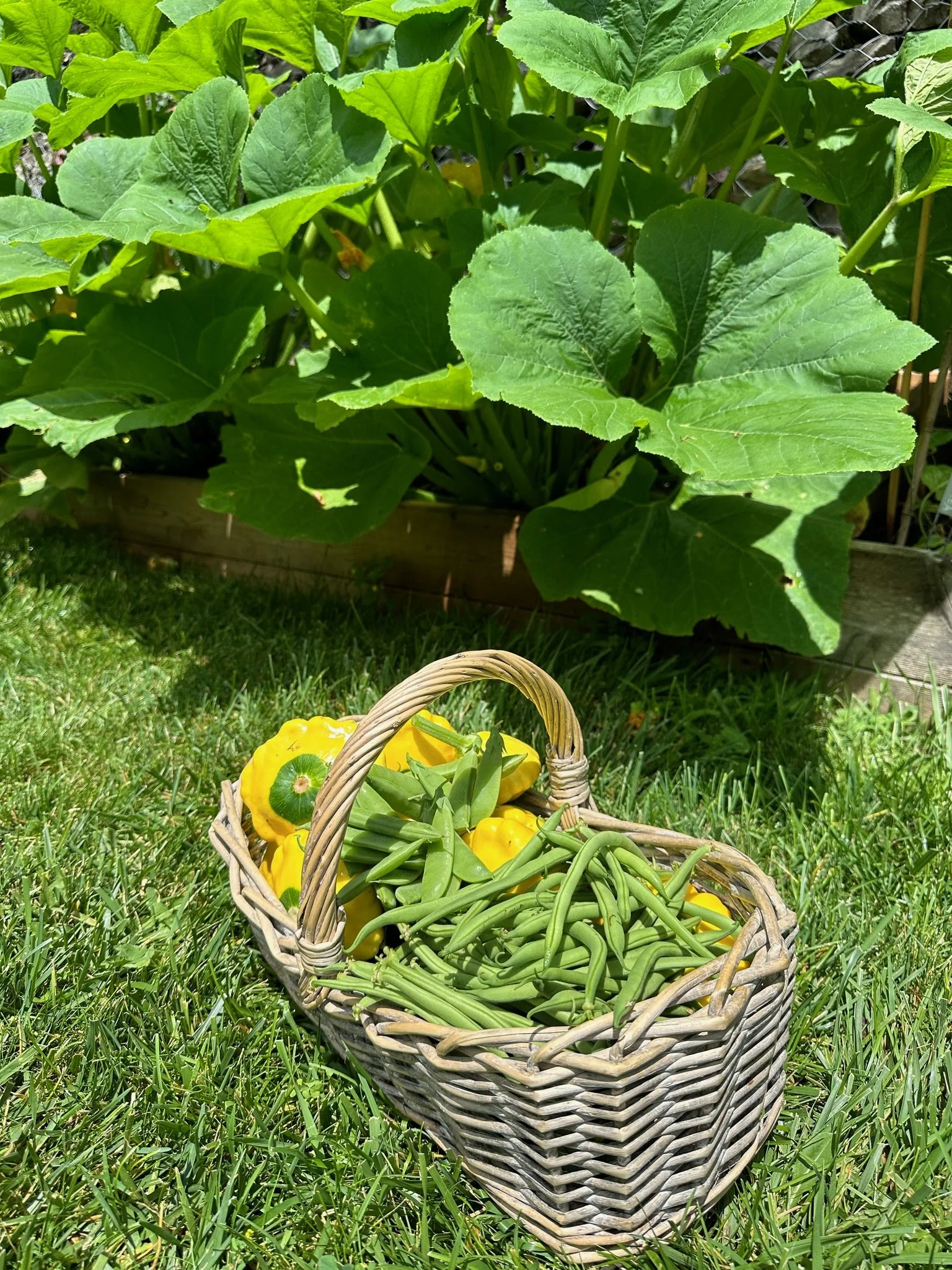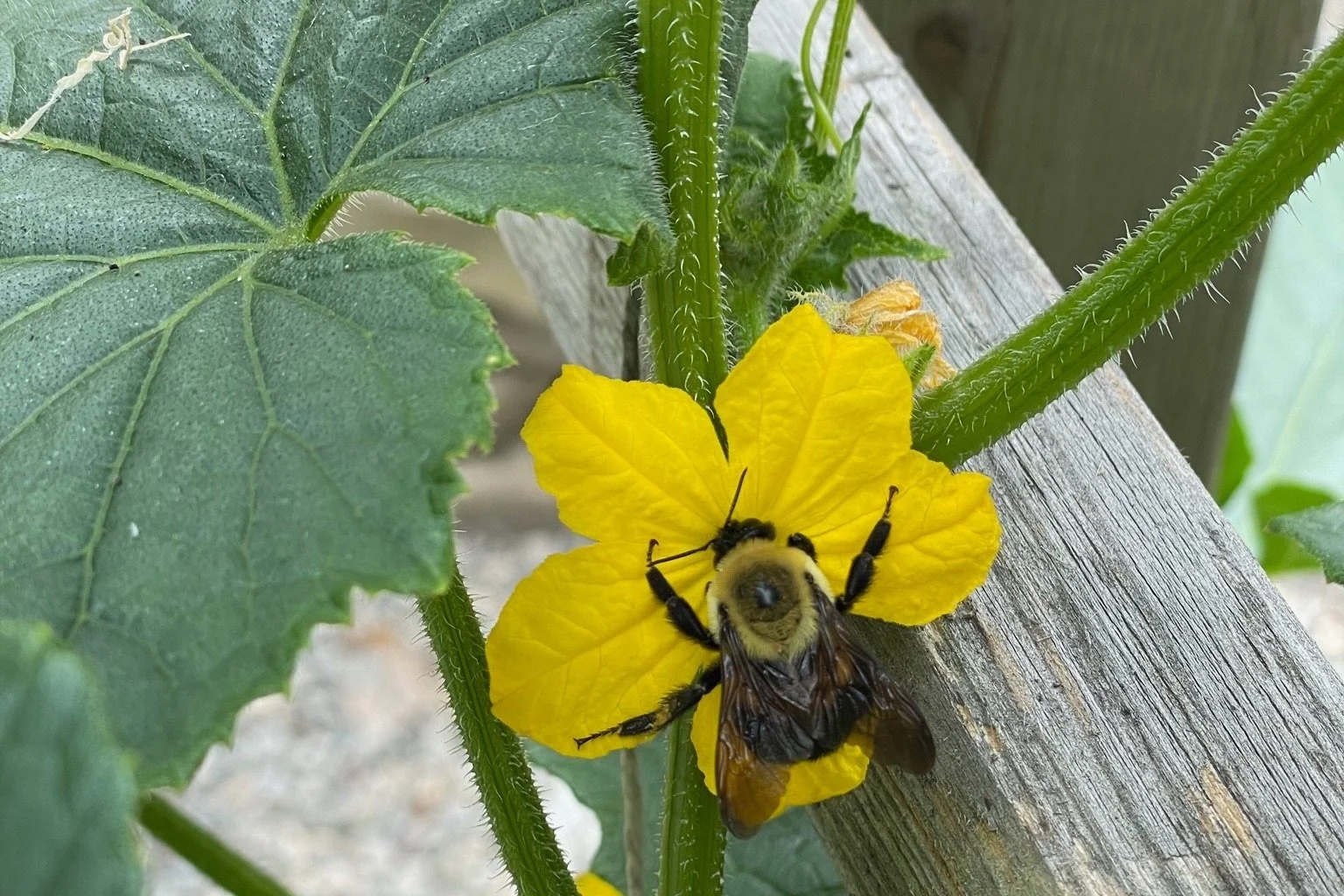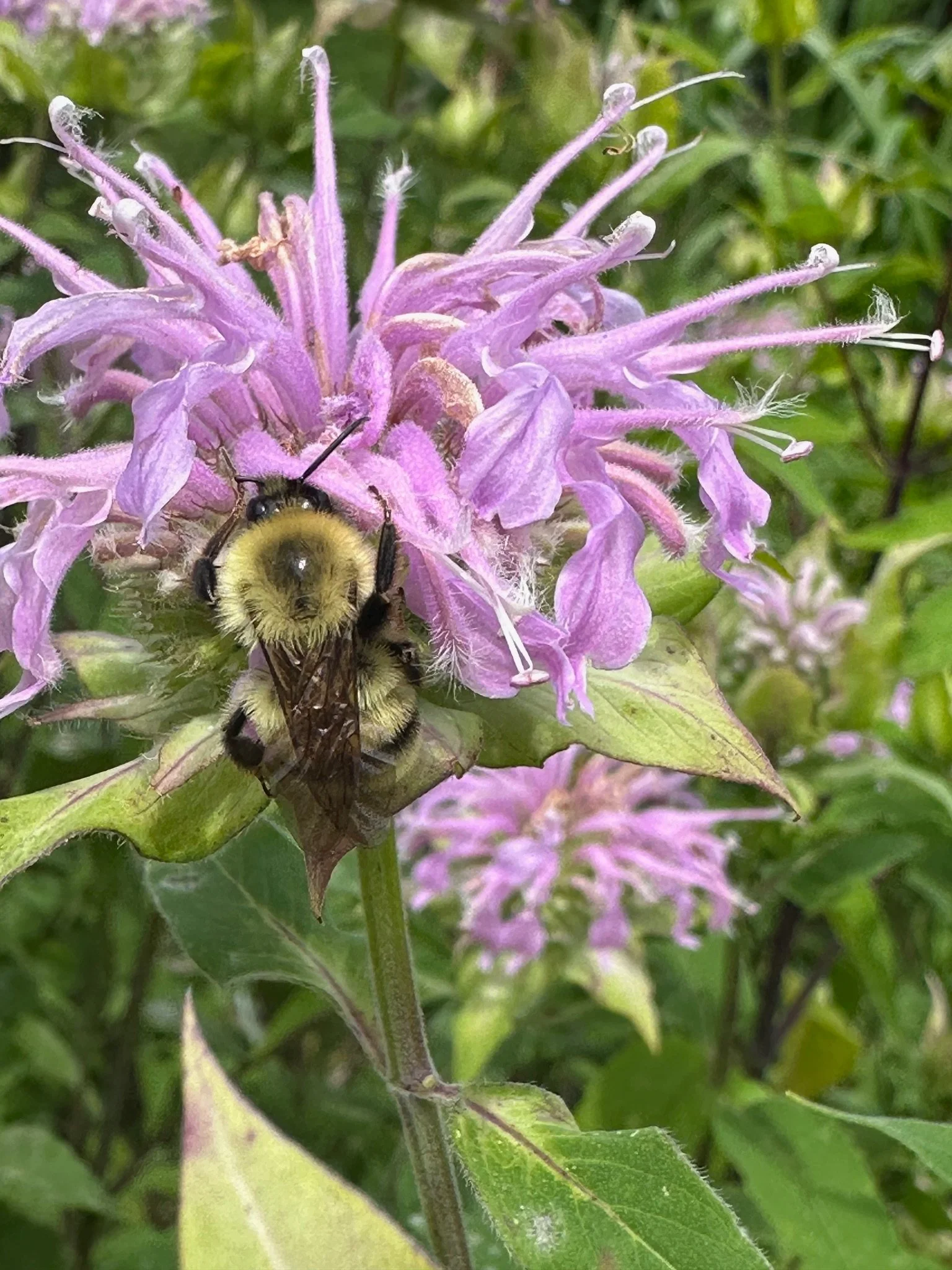Wild Bergamot & Companions
According to the United Nations Environment Programme (UNEP), over 70% of the 100 crop varieties that provide 90% of the world's food rely on bees for pollination. This underscores the vital role bees play in global food production and highlights the urgency of protecting pollinator populations.
Research shows that native and non-managed bees are significant contributors to crop pollination, often complementing or even exceeding the efficiency of honeybees in certain contexts. However, the specific proportion of pollination performed by native bees varies depending on the crop and region.
In Southern Ontario, native bees are particularly crucial, with over 400 species thriving in the region. These include sweat bees (Halictus and Lasioglossum species), bumblebees (Bombus species), and leafcutter bees (Megachile species). Together, they pollinate a range of crops, such as tomatoes, blueberries, and cucurbits, as well as wild plants, supporting both ecosystems and agriculture.
Native plants play a pivotal role in fostering these pollinator populations while benefiting crops. In our earlier post, Raspberries and Companions, we discussed how native plants help sustain pollinators. Here, we shift the focus to a specific plant that demonstrates its dual value: Wild Bergamot (Monarda fistulosa), or bee balm.
Wild Bergamot is a cornerstone for native bee populations in Southern Ontario. Its tubular, nectar-rich flowers are a magnet for various native bees, including bumblebees, sweat bees, and leaf cutter bees. Blooming from mid-summer to early fall, it provides essential resources for pollinators during a crucial period when other flowers may be scarce.
Beyond supporting pollinators, Wild Bergamot is a valuable companion plant for vegetable gardens. Its vibrant blooms enhance the pollination of crops such as squash, zucchini, and tomatoes, while its strong aroma acts as a natural deterrent for pests like squash bugs, offering the combined benefits of pollination and pest control. Thriving in well-drained soil and full sun, this versatile plant is a must-have for gardeners.
Taking a closer look at the pollinators Wild Bergamot attracts reveals its true potential as a companion plant. Medium to large bees, such as sweat bees, longhorn bees, bumblebees, hover flies, and furrow bees, are all drawn to its blooms. These industrious pollinators not only visit the Bergamot but also efficiently pollinate nearby vegetables, including tomatoes, peppers, eggplant, green beans, cucumbers, squashes, zucchini, and melons.
With its bloom time coinciding perfectly with peak crop pollination needs, Wild Bergamot ensures an abundance of happy pollinators—making it the perfect ally for gardeners. Happy bees lead to thriving gardens!
Wild Bergamot, like many plants, is prone to powdery mildew. Don’t worry too much about this disease spreading to your vegetables; it's caused by specific fungal species that aren't compatible with plants like beans or zucchini. The best way to prevent powdery mildew is by watering at the base of the plant rather than overhead, as moisture on the leaves encourages fungal growth. If signs of mildew do appear, promptly remove and destroy the affected leaves.
Enhancing air circulation by thinning dense foliage is another effective way to curb the spread. Early on, you can also try using a milk spray—a tried-and-true method! Milk contains proteins that, when exposed to sunlight, create antiseptic effects that inhibit fungal growth. For best results, apply this remedy during sunny conditions, as it works more effectively as a preventative measure.






